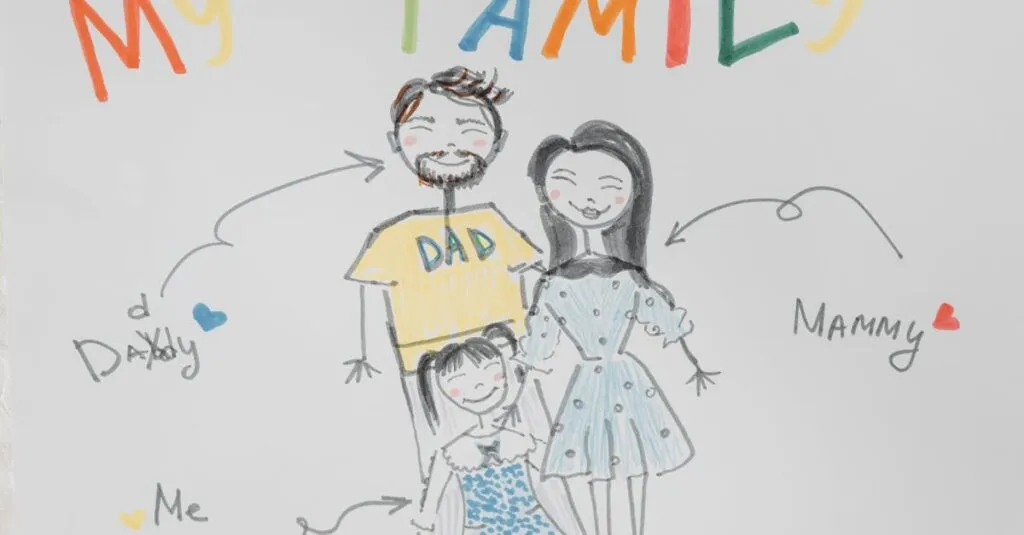Understanding Young Minds in Prayer
Preschoolers are like little explorers armed with a never-ending curiosity and boundless energy. When teaching them to pray, it’s important to remember they’re still learning about the world around them. Prayer can be quite beneficial, serving as a gentle guide for navigating their feelings and decisions.
Start by explaining prayer as a conversation with a friend who always listens. This approach makes it relatable and fun. Who doesn’t love having a best friend always ready to hear about their latest sandbox adventures?
By using simple language, kids can grasp the basics of prayer, turning daunting concepts into comfortable, child-friendly ideas. Keep expectations light and celebrate their natural creativity, letting it shine in their personal prayers.

Creating an Inviting Prayer Routine
Create a routine where prayer becomes an anticipated part of the day, much like storytime before bed. Choose specific times such as:
- Breakfast
- Before naps
- Bedtime
Aligning prayer seamlessly into your child’s schedule is essential. The key is consistency and creating an environment that feels welcoming. Routines help children feel secure, and incorporating prayer into these moments can transform mundane activities into a comforting ritual.
To make the routine more engaging, consider:
- Adding songs
- Using plush toys to act out prayer stories
These activities can lighten the mood and keep kids engaged. Also, remember that if your child strays into an imaginative tangent, it’s perfectly okay—go with it! It adds to the fun and keeps the spirit of the moment light!

Embracing Bumps in the Prayerful Journey
Just like any other new experience, expect a few hiccups along the way. Be ready for colorful stumbles—like when my little one prayed for candy to magically appear. These blunders are teachable moments.
Use humor to point out the silliness and gently guide them back. Encourage open-ended questions to explore their thoughts further. It’s less about the ‘right way’ and more about fostering open communication.
This journey should be less about perfection and more about connection. Share your own silly prayer stories with them; it builds a trusting rapport and shows them it’s okay not to have it all figured out.

Practical Tips for Nurturing Prayer Habits
Small steps lead to big habits. Start with short, simple prayers. The aim is to set a foundation without overwhelming them. For example, before meals, guide them to say thanks for their food, teaching gratitude.
Patience is key—children take time to internalize these habits. Consider incorporating visual aids like picture books or prayer cards tailored for young minds. They offer a clear path and stimulate their interest with colorful graphics.
Tools and Techniques
- Meet them at their level with tools that resonate with their learning style.
- Utilize positivity and encouragement to craft an inviting space for their spiritual growth to flourish.
Visual Inspiration

Exploring Emotional Challenges in Children’s Prayers
Kids experience a whirlwind of emotions, and understanding them is crucial when establishing prayer habits. They may feel shy or unsure about opening up, particularly in their early attempts.
Offer reassurance by showing that expressing feelings is perfectly okay. Normalize emotions by sharing age-appropriate stories where characters face emotional challenges.
If they find it hard to articulate these feelings, it’s alright. Offer simple alternatives like:
- Drawing
- Using toys to express what’s on their mind
The objective is to connect prayer with emotional expression, easing them into seeing it as a comforting outlet rather than a daunting task.

Fostering a Supportive Family Prayer Environment
Establish a family routine where everyone takes turns in praying. Making it a family affair reinforces its importance and creates a platform for shared experiences. Encourage laughter and smiles, prioritizing togetherness over perfection.
Share your own prayer intentions, letting them see mom and dad are part of this journey too. This bond can build strong familial ties, fostering a supportive network surrounding prayer rituals.
Encouraging Participation
Moreover, ask your children to come up with prompts for prayer sessions. It empowers them, showing how valued their input is. Happiness is contagious—when parents show enthusiasm for prayer, kids naturally feel more inclined to participate.
Visual Inspiration
Here’s an inspiring image to reflect on:

By creating a supportive environment, you not only strengthen your family’s bond but also deepen each member’s spiritual journey.
